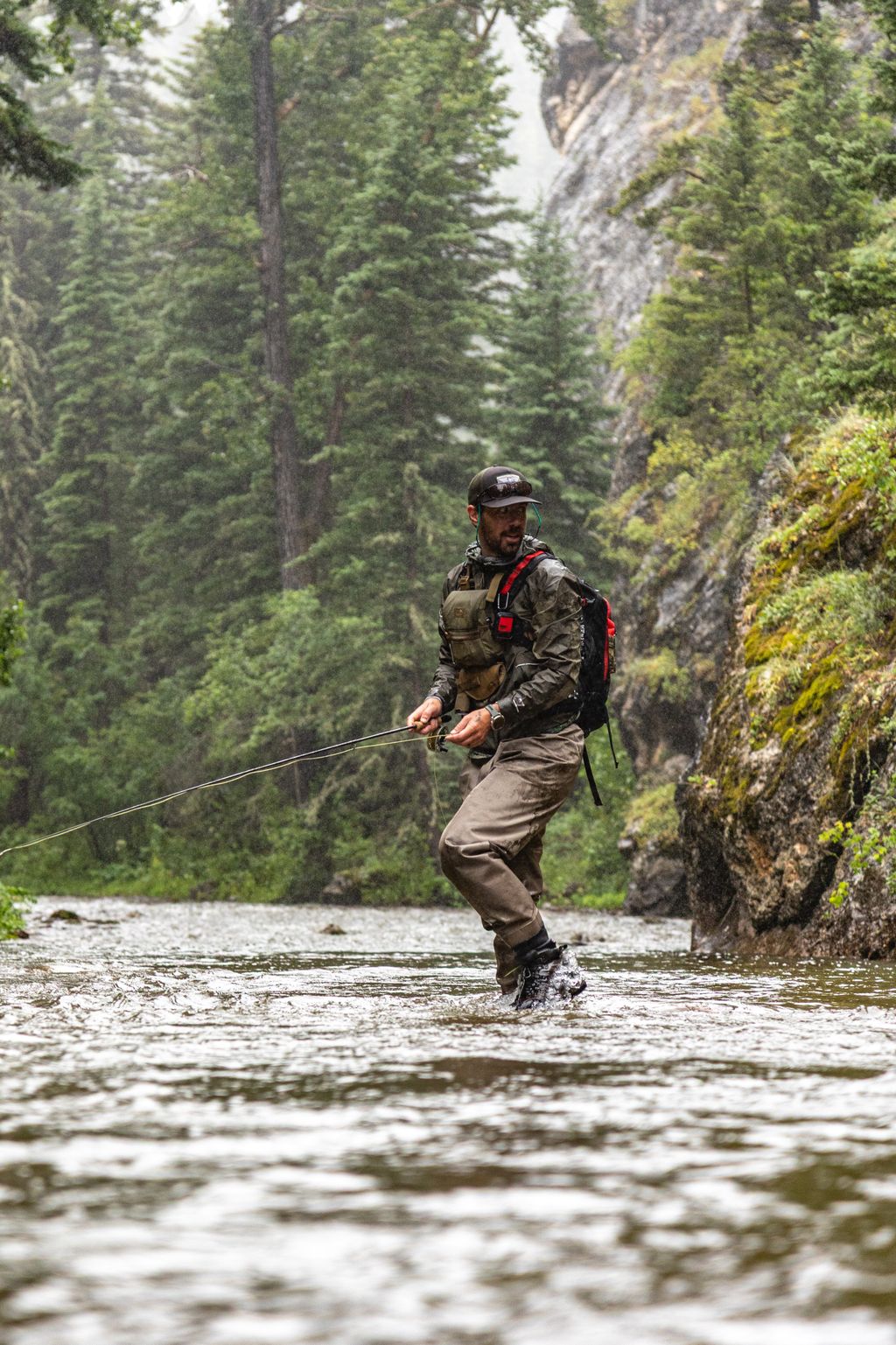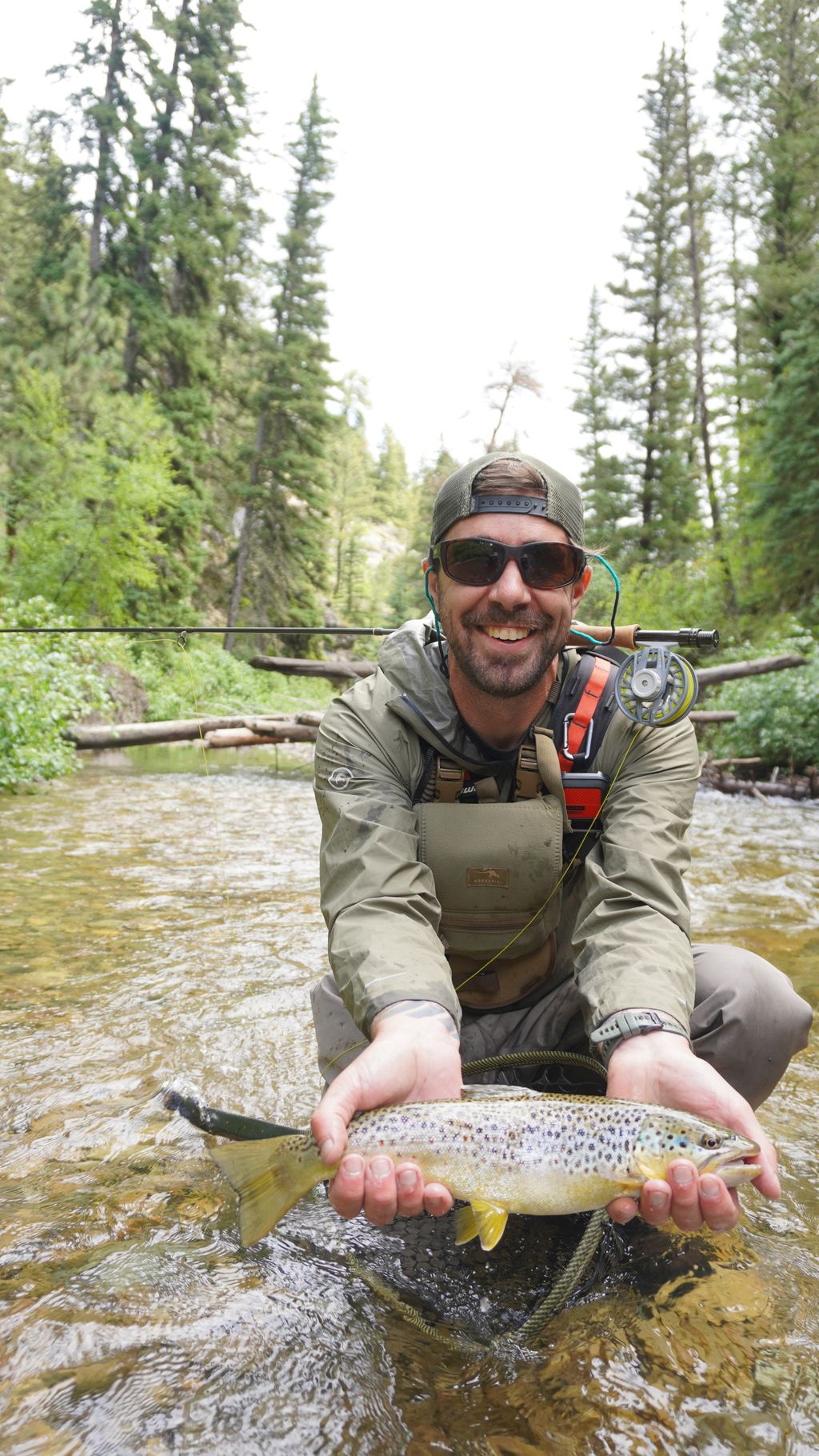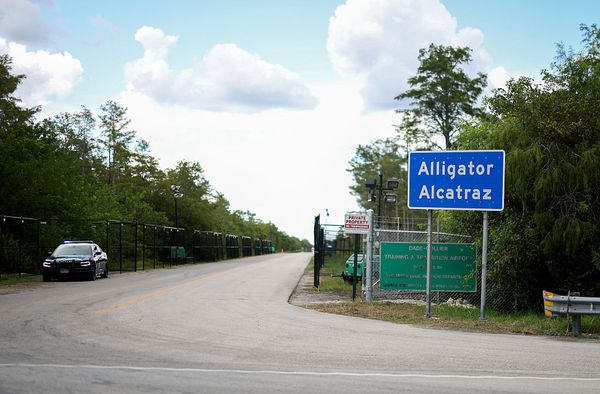STANFORD, MONTANA. There is a Japanese phrase I adore: shinrin-yoku. Translated, it means "forest bathing," or the therapeutic act of heading into the woods. It's a concept I've explored countless times without knowing the phrase itself until recent years, but when I grow weary of the modern world—and its ability to seep into every aspect of my life—I leave the world behind.
I go to the mountains, high alpine streams, wildfire-scarred landscapes, and wherever else on public lands I can find without cell service. There are still wild places in this world to explore, and they are—for those who've never partaken—glorious. There, you can watch a sunset pierce through old-growth pines, witness the cascade of waterfalls off limestone cliffs, encounter a bear or two or three, and even find yourself some true silence: utterly deafening in its nature.
Few things bring me as much joy and peace as the woods these days. Few things can offer such respite. Yet, it had been a minute since I had the opportunity to go out myself, reflect on their beauty, partake in that silence, and bathe myself in the forests that are our nation's greatest legacy.
Now, Montana is one of those Western states where you can do just that, but to a degree I don't think many understand. The ecological diversity here is vast, the terrain can rise and fall like the Roman Empire, the flora and fauna are too numerous to count, and you can enjoy being away from your desk, your job, and your life however you so choose.
I chose to explore. I chose to hike tens of miles along the newly restored Middle Fork of the Judith River. To rip a Stark Varg EX through the forests of the Helena-Lewis & Clark National Forest. And to bring my Orvis and Greys fly rods to a hundred-year-old forestry cabin that’s been used as a way point on so many peoples’ adventures before fishing the river a stone's throw away from the cabin's porch.
Few places on this speck of dust floating in the winds of space could captivate my imagination, my vigor, and allow me to breathe so deeply and fully as here could. Few places are as quiet. Few places could offer such a bathing in the forest.
Few offer such shinrin-yoku.




The Judith River Guard station was erected in 1908, a full 117 years ago and has stayed practically the same for those 117-odd years. There's no running water. There's no electricity. There's no cell service. And you may be sleeping with a bat or handful of mice depending on the time of year. It's not just old-world, it's straight out of the pioneer days, though absolutely picturesque and perfect for any sort of trek into the Helena-Lewis & Clark National Forest, a 2.8 million acre plot of land that covers parts of central and north-central Montana.
It is less perfect for something like an all-electric Stark Varg EX, though. Where are you going to juice up for all your adventures if you don't have any outlets? How are you going to keep riding?
But I chose to bring along the EV dirt bike for a few reasons. First and foremost, I love electric dirt bikes. I find I have more finite control when I'm doing technical or low-speed riding, and I adore how light they are compared to their gas brethren. Second, ripping through the forest while it silently hums beneath me is surreal, as despite it emitting noise, it's quiet enough that you can still hear the wind through the trees. And when you come to a complete stop, the silence of the world around you is awe-inspiring. You can hear everything, which isn't the case with a two- or four-stroke. Hell, it's not even true of an adventure motorcycle.
And lastly, I brought this bike because of the Middle Fork of the Judith River itself.



I'm of the mindset that we, as outdoor recreators, have to be great land stewards. We can't just tear off into the wilderness, create new trails, tear up old ones, and blast through ecosystems with wanton abandon. We have to respect our public lands, as if we don't, we're liable to lose them. And that's either through our own negligence or because other groups will use our behavior against us and begin closing trails for good. It's why I'm against the repeal of the Roadless Rule while my colleagues may not be. And it's why I wanted to see the Middle Fork on the back of the Stark.
Recently, the Middle Fork saw a multi-year restoration thanks to the good folks at Montana Trout Unlimited, the State of Montana, the feds, and a few other groups, as the river had fallen into near collapse. Why, because there were countless crossings eroding banks, screwing up the fragile riparian ecosystem, and changing the way how the river behaved. Not only was that bad for the fish that inhabit the river, but sooner or later, the collapse would've likely affected the whole of the woods that off-roaders came to witness. A closure of crossings had to be done to save everything, as well as the restoration of over 1,300 feet of bank.




Now, Montana Trout Unlimited didn't close everything. In fact, there are still a few crossings in key areas and they built new OHV trails in the surrounding areas, too, so off-roaders, dirt bikers, ATV and UTV'rs and other outdoor recreationists can still access these beautiful landscapes. But the river needed help. And while there are those who'd visited the area before who'd probably bemoan the loss of trails, I spent three days exploring the wilderness surrounding the Middle Fork in the national forest and had an absolute blast on the surrounding trails. There feels like there's no end to your trail possibilities.
And again, there's still a few water crossings, one of which came nearly up to the seat of the Stark much to my surprise.
For three days, I set out to my heart's content, and experienced three different weather events. The first day was 94 degrees and blisteringly sunny. The second was a monsoon and dropped the mecury to read a balmy 50ish degrees with some wind. And the last day was utterly perfect, with the sun peeking out and the temperature just right. A goldilocks day.
But in those moments spread out over the three days, I rode through massive puddles, found myself in high alpine meadows that looked liked something out of Jurassic Park, streaked through slot canyons to the sound of the Stark's whirring motor, broke the kickstand on a silly little ledge, and slowly crept across the Judith's pebbly river bed, accidentally putting a foot down when I reached the opposing bank. My boot is still full of water a week later, and possibly holds a trout. And the Stark made the whole thing that much easier to respect the woods, as I could control how much vigor went to that rear wheel.



For the stream crossing, as I was cognizant of all the work Montana Trout Unlimited did to restore the river, I dropped the Stark to its lowest horsepower and inched my way forward, making sure I didn't rip up anything any more than I needed to. But for the fast sweepers of the trails, I could crank up the wick and rip the rear wheel off until it finally found purchase at 50 mph. It was also helpful to dial it back down when I was going over technical and slippery rock shelfs, snail-pacing my way through the soaking wet grass of a high meadow, or ramping up the power to get up a steep hill.
And when I wanted to conserve some juice for the next day's adventures, I dropped it all back down with a push of the button. I actually ended with around 20% charge, which means I could've probably had some more fun had I not fished so much.
There was no denying how good this river's trout fishing was, however.

I'm still new to fly fishing, having recently picked it up at the Kawasaki Ridge Crew event where my friend and fly fishing mentor, Field & Stream's Sage Marshall, and I went fishing along Rock Creek. I was, pardon the very inevitable pun, hooked. But nothing could prepare me for the sights, sounds, and the hard-hitting, aggressive trout of this river.
The scenery that rose up from the river's banks was as if I was transported to another world. One where these towering limestone cliffs with caves carved into their bases would give way to Pacific Northwest-esque coniferous forests that held all manner of flora and fauna, including some big bears—hence the Sig Sauer on my chest.
And the fish, get out of here.

Before this trip, I'd caught about 10 fish total on a fly rod, with middling to fine success on the days I snuck away to practice. I've been fishing since I was two, but fly fishing is new to me. The Middle Fork, however, is a paradise as I took both an Orvis Clearwater and Greys Wing Streamflex with me, both outfitted with different fly setups so I could cover ground and different situations: dry flies vs. double nymphs on floats. And Montana Trout Unlimited's good restoration work was absolutely witnessed firsthand, as we hooked into fish each time we put a foot into the river.
Over the three days and nearly 20 miles we'd hiked along the Middle Fork's shores, we landed somewhere in the neighborhood of 60 fish. Some were tiny little things that bullied our belief the river was healing, and some we should've absolutely kept for dinner—there were a few monsters that got away, too, as every good fish story requires. I don't think I've been on a better fishing excursion in my life.



Yet, it was the silence of the whole experience that really stood out.
While I was with Andrew Knight, one of Montana's folks and a former fly fishing guide who I learned a metric ton from, we spent hours being pretty quiet, soaking in the beauty that surrounded us. He took a number of the pictures you see here, as we were constantly left mouth-agape whenever we turned a corner and found some new fishing hole, wild country, or beautiful nook that you wouldn't have even guessed was just around the bend. Every turn brought something new to experience, and no two were alike. That was the same feeling I had on the Stark, as this area of Montana is one where you can hike or dirt bike a mile in any direction and find yourself in a whole new ecosystem. And all you have to do is choose your method of travel to explore them.
It truly was otherworldly.

But what's cool is it isn't another world. It's our's. It's right up the street from me—albiet 10 hours up the street. And depending on your location, it could be closer or further, but the land, the exploration, the gift that is our public lands, the gift that is Montana's wild places, well that's staying right there. And because of the good work by Montana Trout Unlimited and the other outdoor groups who helped restore the Middle Fork area, as well as those who help maintain the off-road trails throughout the Helena-Lewis & Clark National Forest, it'll stay that way for a long, long time. It'll be home to some of the best fly fishing in the country, a secret that's now liable to be out due to my experience, and likely just keep getting better year after year thanks to that restoration.
And the forest, with its towering trees and cliffs, the sights of the limestone caves and deep blue cuts that held brown and rainbow and brook trout, a forest where I absolutely heard a bear's growl, well, that'll be here for when my kids and grandkids want to go do their own shinrin-yoku.
A place where they can bathe in the forest themselves.







